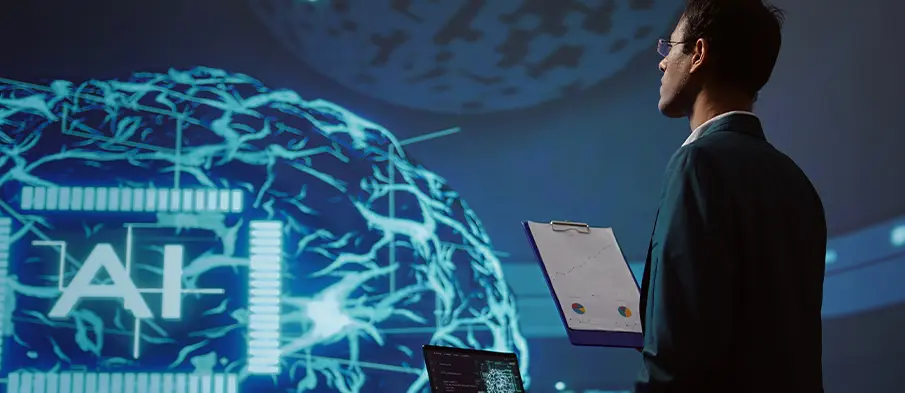
The past five years have produced a parade of dazzling AI demonstrations: chatbots that draft legal briefs, vision systems that spot hair‑thin cracks in turbine blades, large‑scale models that predict customer churn months in advance.
Yet talk to operations leaders and a quieter statistic surfaces: according to Gartner, more than 80% of AI proofs‑of‑concept never become stable, revenue‑generating systems. In board rooms this gap is chalked up to “change management.” In machine‑learning circles it is called the last‑mile problem—the distance between a clever model and a workflow that people trust every day.
Why the Last Mile Trips Us Up — for Real
In most AI pilots that fail to graduate into production, three resource constraints collide—data, time, and manpower.
Not enough data
Relevant data is often absent and difficult to gather. Edge-cases are missing, privacy rules block access to critical fields, and hand-labelled examples trickle in too slowly to train a robust model. Without breadth and depth, accuracy plateaus and confidence evaporates.\
Not enough time
Business sponsors expect results in weeks, yet gathering, cleaning, and annotating industrial-scale data takes months. The clock runs out just as model performance starts to improve, and the pilot is shelved as “not ready.”
Not enough manpower
Domain experts—the only people who can label subtle defects, fraud patterns, or medical findings correctly—already have day jobs. When their calendars clash with the project plan, annotation queues back up, experiments stall, and momentum is lost.
Engineering Patterns That Close the Gap
Teams that consistently cross the finish line do something different: they manufacture the data they can’t collect fast enough.
- Synthetic data generation builds on and supplements real-world samples with perfectly labelled, scenario-rich examples that cover the long tail of conditions you have yet to observe. By simulating rare events, lighting changes, sensor noise, or demographic shifts, engineers feed the model the variety it needs without waiting for it to happen “in the wild.”
- Auto-labelling pipelines bootstrap the annotation process. A small seed of expert-labelled data trains a first-pass model that labels the next batch automatically; experts then correct only the uncertain cases, multiplying their impact.
- Data contracts up front define the minimum viable dataset—fields, formats, privacy constraints—so integration teams can work in parallel while synthetic data fills the inevitable gaps.
- Modular simulation environments let engineers dial up new edge-cases (a new defect type, a new fraud tactic, a new weather condition) in hours instead of months, ensuring the model stays current as business reality evolves.
Together, these practices attack the real culprits—data scarcity, calendar pressure, and limited hands on deck—while giving the pilot room to breathe. Synthetic data is not a “nice-to-have” garnish; it is the raw fuel that lets AI systems mature quickly enough to survive the corporate attention span. Cross that gap, and the last mile is no longer a cliff—it’s just the final hundred metres of a well-paved road.
A Field Lesson from Aviation Glass
Consider the recent experience of Aviation Glass, a Dutch manufacturer of high‑tech panels used in aircraft cabins. For years, inspectors examined each glass panel under bright lights, searching for scratches, bubbles and coating irregularities—a process that took more than twenty minutes per unit and depended heavily on human eyesight and consistency. With more than forty product variants and thirty distinct pass‑fail criteria, the company saw inspection as both a cost centre and a choke point.
In 2023 Aviation Glass replaced manual inspection with an automated vision pipeline built on Zetamotion’s Spectron™. Instead of handing control to an opaque black box, the quality team kept a human in the loop. When the system was uncertain it surfaced the panel image and its reasoning; inspectors could confirm, correct, or flag the logic for later review. That feedback re‑entered the model daily, tightening its accuracy.
After the first twelve months the transformation was easily measurable. Average inspection time dropped from more than twenty minutes to roughly twenty seconds, liberating an estimated 1 200 staff‑hours a year. Across 2 500 panels the system assessed more than 300 000 potential defect candidates and identified real defects with 99.99 percent accuracy—while scaling seamlessly across forty‑six product types. Most tangible to the bottom line, the ability to spot subtle process drift early led to a five‑percent increase in overall yield and a marked reduction in material waste.
“The platform’s efficiency and precision have not only enhanced our inspection capabilities but also provided us with insights that drive continuous improvement,” says Jaap Wiersema, Managing Director of Aviation Glass. Because every panel now leaves the factory with a digital inspection record, recall risk has fallen and customer confidence has risen.
The episode underscores three lessons. First, invest time up front to agree on defect taxonomy; a shared language prevents downstream friction. Second, automation should capture—not erase—expert intuition; a feedback loop measured in seconds, not days, keeps the model grounded in reality. Third, modular design pays dividends; when engineers decided higher‑resolution cameras would reveal a previously hidden defect class, the swap took less than a day because the pipeline was built for change.
From Checklist to Culture
What does that mean for executives assessing their own AI readiness? Start by tracing each production feature to its source system; if lineage is murky, reliability will be too. Instrument not just accuracy but human‑centric metrics—override counts, investigation time, alert fatigue. Run drift drills that mimic Black Friday, a marketing surge, or a geopolitical shock to supply‑chain data. And embed a safe‑mode: a clear path for the system to degrade gracefully rather than fail catastrophically.
None of these steps are glamorous, but together they shrink the distance between a promising prototype and an everyday tool. In that sense the last mile is less a technological hurdle than a cultural litmus test. Enterprises that respect data contracts as much as code, that reward feedback as much as accuracy, and that design for change rather than perfection are the ones converting AI’s promise into durable advantage.
Looking Ahead
AI will continue to surprise us—new architectures, bigger models, faster chips. But the competitive edge will belong to firms that master the mundane art of production. Aviation Glass offers a glimpse of what is possible: a safety‑critical industry where
inspection used to bottleneck growth now runs faster, cleaner, and with more insight than before. The route from pilot to production is not automatic, yet it is navigable when data robustness, drift awareness, and human trust are engineered as first‑class citizens. Cross that last mile and the road ahead widens dramatically.






